Today in the shop
We are no longer building saddle trees, but we have two videos about how Western saddles fit horses available on our westernsaddlefit.com website.
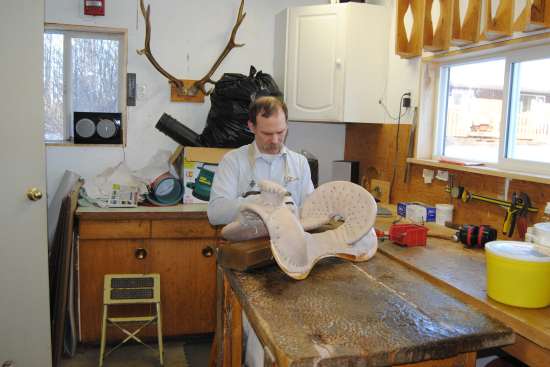
Today was just a normal day in the shop for us, and I thought I'd show you pictures of what all is happening in a normal type day. I know it is Saturday. We take Sunday off, but we pretty much always work in the shop the other six days of the week. Rod is out there by 8 am, takes an hour at lunch and quits at 6 pm, six days a week. So if you are wanting an easy job with short hours and lots of holidays, don't be a saddle tree maker...
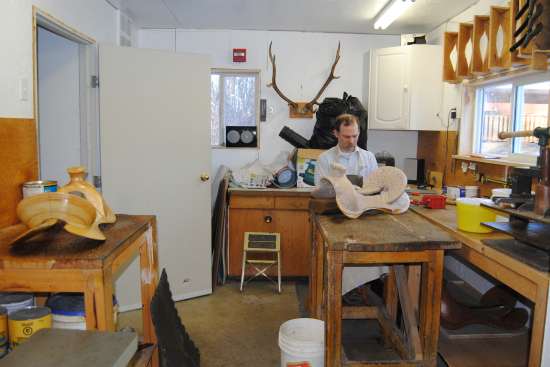
Other things to notice, besides Rod working on the tree, is the rubber mat leaning against the varnishing bench. That is there to go under the tree when it gets turned over. Rod found that leaning wet rawhide on the edge of the cantle and fork against the table even for the length of time it took to stitch a bar would sometimes leave flatter spots. These generally could be worked out as the tree dried, but it is easier to not have them to start with. Thus the foam mat rather than the hard table top.
Rod finished making the tree on the varnishing bench yesterday. I varnished it last night and again this morning before this picture was taken. I gave it the last coat tonight, and Rod will rawhide it Monday morning.
At the back of the room are shipping boxes and packing paper. The black tube in the box is part of the leaf blower we will use to stir up the dust in the shop and then leave, letting the air cleaner run and remove a lot of the fine dust that gathers over time.
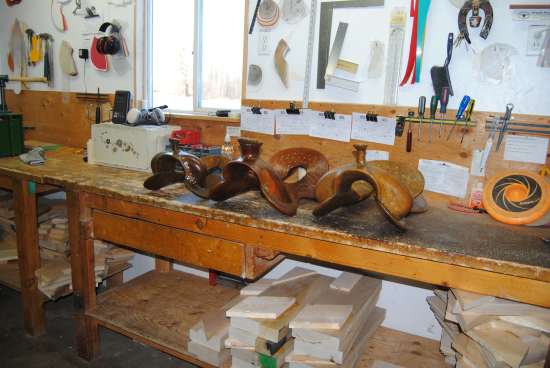
On the bench in the main room are three trees that got their last coat of varnish today. They will be ready to ship out when I go to town next week. One is the kid's tree I wrote about earlier. The Wade goes to the same maker in Alberta and the 14" Bob Crosby is headed to BC.
Under the bench is the wood all ready for Rod to cut out next week. I got it all cut, planed, thicknessed and laminated over the last few days and then marked it out - bars, forks, cantles and horn caps - today.
In the green glue press just off to the left side of the picture is yet another Wade fork being glued up, seeing as we have a lot of these ordered at the moment. And the sock in front of it... well, it is a glue sock. We found that the best thing for cleaning up excess glue as we laminate wood is old cotton socks. The price is right on them too...
As for the frisbee, that is to give Taylor the wonder dog some excitement in her life, and standing outside and talking on the phone is a great time to give her that excitement. So it lives on the bench right beside the door.
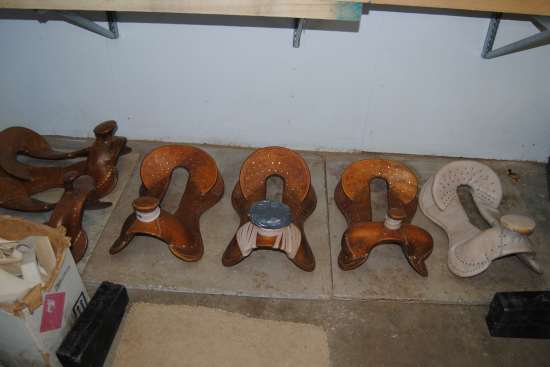
Turn around and you can see the trees drying on their flat marble stones. The one on the right was done this morning and is soaking wet. The other three looking at us are two Wades and the Olin Young tree done a week ago. While the seams are pretty much done by now, Rod checked them over and reset nails morning and evening, as he does every day.
The tensor bandages are there to hold the rawhide tight to the tree in places you don't want to or can't put nails. They are put on and then removed for 12 hour shifts until the hide is dry enough to hold its shape without taking on the marks from the tensors. Then they are left on the horns till the trees are dry. Sometimes the rawhide wants to pull out from around the gullet, so extra wraps are put around the fork to hold things in place during the crucial periods.
The two trees on the end are finished. A Wade is at the back and the other is a copy tree we are waiting for payment on. Leaving trees sit on a flat surface is the best thing for them as compared to setting them on their fronts or storing them other ways.
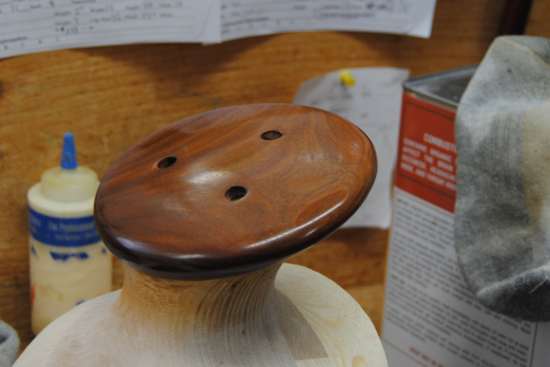
The silver looking horn on the center Wade is, indeed, duct tape. It is covering an exposed Jarrah wood horn cap. Rod sanded and finished the horn. Then it was covered with old socks, (they really come in handy...) plastic and duct tape to protect it during the varnishing and rawhiding procedures. That protection will be removed right before we give it a final coat of finish (again, with one of those handy, dandy socks) and ship it out. It is nice to be able to let some of the wood we use be seen by others. So much of it is just beautiful...
